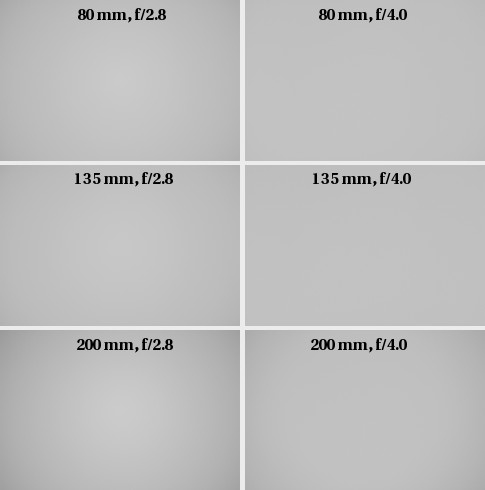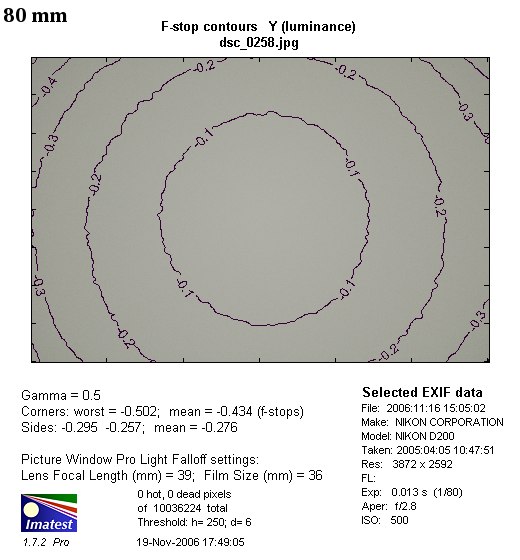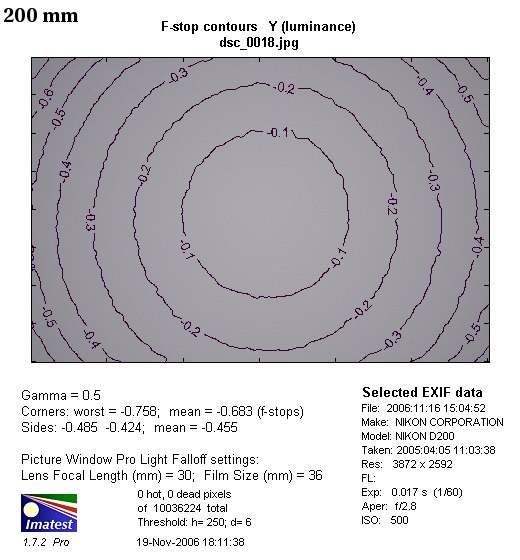Nikon Nikkor AF 80-200 mm f/2.8D ED
8. Vignetting

Therefore at the 80 mm focal length at f/2.8 the vignetting is 14% (-0.43 the value of the diaphragm) and it drops rapidly when stopped to f/4. At 135 mm focal length the situation is even better since the light fall off in the corners of the frame at the maximum aperture is only 11% (-0.34 the value of the frame) and at f/4 it is only 2%.
Please Support UsIf you enjoy our reviews and articles, and you want us to continue our work please, support our website by donating through PayPal. The funds are going to be used for paying our editorial team, renting servers, and equipping our testing studio; only that way we will be able to continue providing you interesting content for free. |
- - - - - - - - - - - - - - - - - - - - - - - - - - - - - - - - - - - - - - - - - - - - - - - -
The largest chances of seeing vignetting are at 200 mm focal length and with an f/2.8 diaphragm. The light fall off in this case is 21% (-0.68 value of the frame). But we won’t see it any more since the defect drops to 11% at f/4.0 and then drops even further to 2% at f/5.6.
These results are just minimally better than the Sigma’s 70-200 f/2.8 results, which with the maximum aperture at the 70, 13 and 200 mm focal lengths, had a light fall off of 12%, 14% and 23%, respectively.








